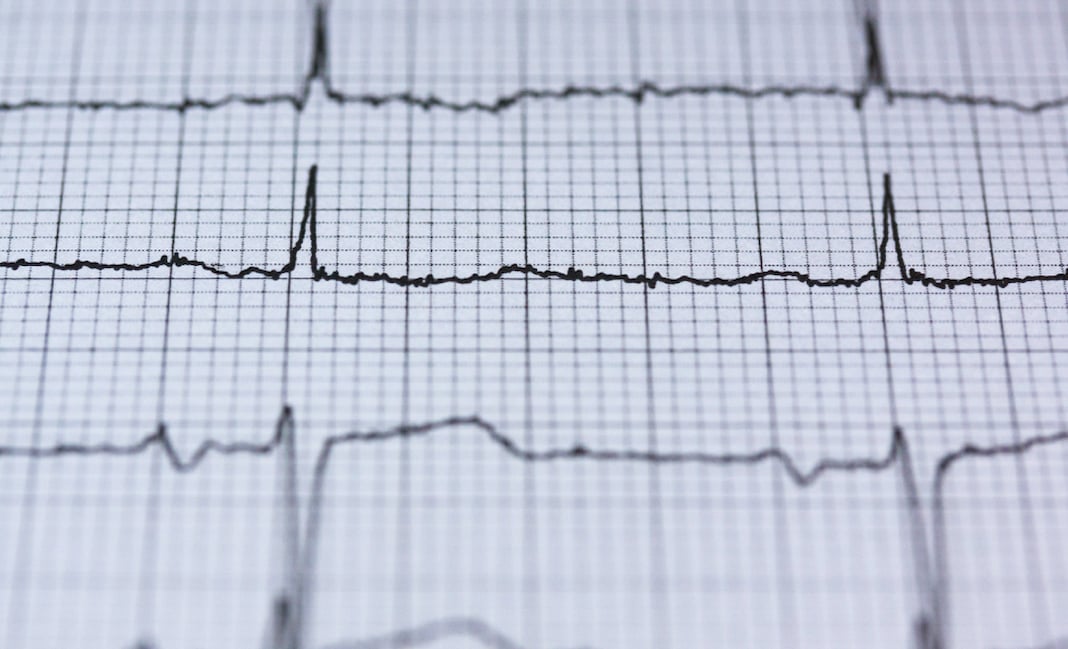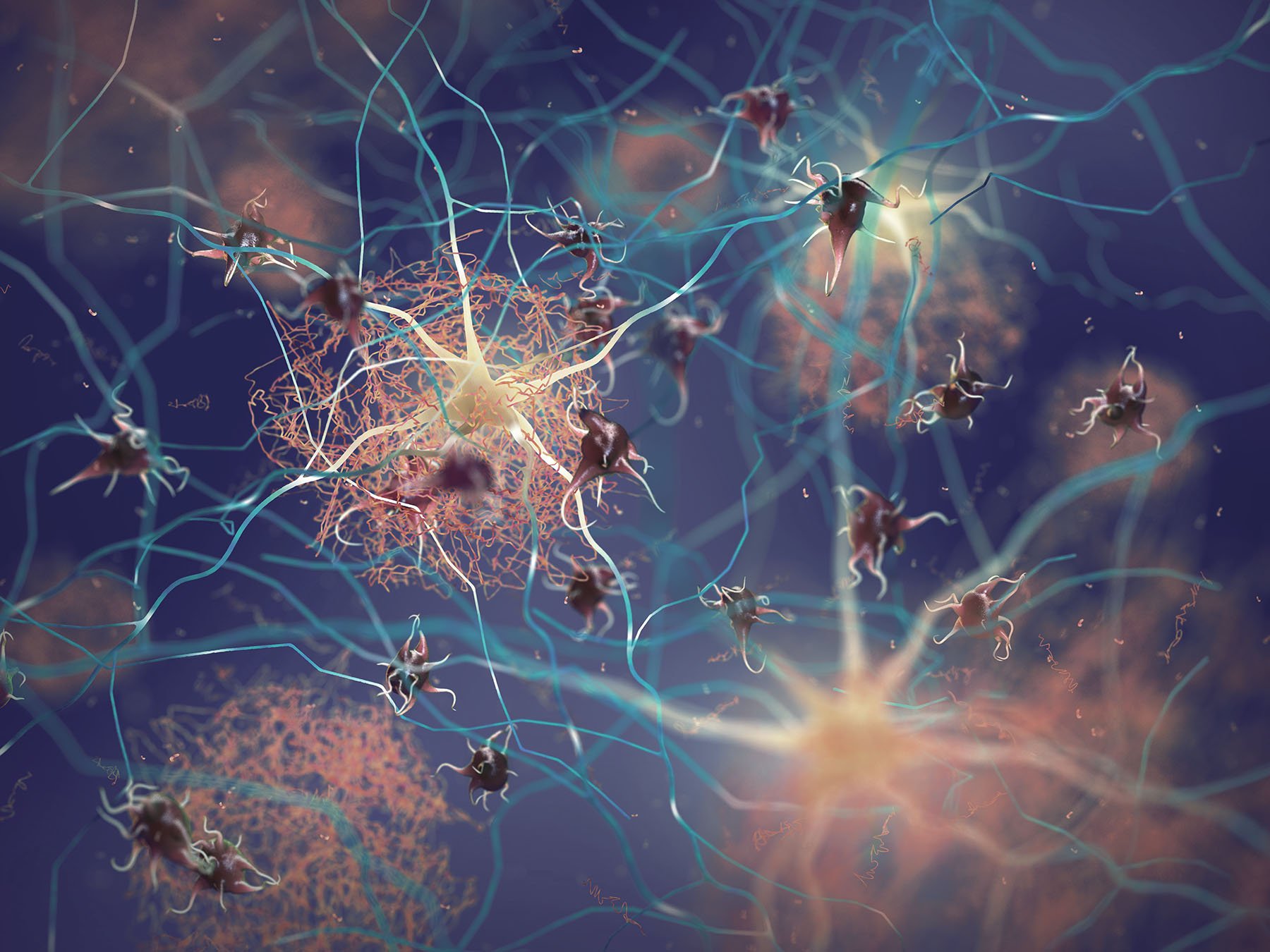More than 3.3 million people died in the U.S. in 2020, and according to the National Center for Health Statistics, eight diseases accounted for more than half of those deaths in 2020 (excluding COVID-19). Over the past decade, these top killers have remained mostly the same, with heart disease and cancer topping the list each year. (Together, in 2020, these two accounted for a third of all fatalities.)
While you may associate high blood sugar, also known as hyperglycemia, with diabetes (the #8 cause of death), you might be surprised to learn that elevated or dysfunctional blood glucose can contribute to eight of the nation’s top ten leading causes of mortality.
Glucose is a vital health biomarker, and it’s critical to understand not just your numbers but also their variability, says Matthew S. Nicholson, MD, an endocrinology, diabetes, and metabolism specialist and assistant professor of medicine at Augusta University in Georgia. “A lot of people don’t realize that blood sugars aren’t static, and how much they go up and how quickly they come back down is important,” he says. “It’s only since we’ve had continuous glucose monitors that we’re starting to understand the complexity of blood sugar. We’re looking at variability by day, month, hour, and the degree of variability.”
While Type 2 diabetes is a distinct disease, it is also a major risk factor for the whole host of lethal diseases. —Rich Joseph, MD
That measure of change, called glycemic variability, has both near-term and long-term consequences when the swings are too big. A blood sugar spike can lead to a crash, which can cause fatigue and brain fog. But repeated high variability is also a risk factor for heart disease and diabetes, as well as neuroinflammation, cognitive dysfunction, and stroke. Repeated blood sugar spikes can also lead over time to insulin resistance, in which insulin is less efficient at moving glucose out of the bloodstream, leading to chronically high blood sugar levels. This physiology can drive several underlying mechanisms behind chronic diseases, such as glycation, inflammation, and oxidative stress. And even when this state gets so severe, it becomes Type 2 diabetes, that’s not always the end cause of mortality.
Related article:
“While Type 2 diabetes is a distinct disease, it is also a major risk factor for the whole host of lethal diseases,” says Rich Joseph, MD. “It is somewhat similar to obesity. Both are diseases in that there is underlying pathophysiology—a breakdown of normal bodily processes. But most people do not die from obesity or Type 2 diabetes. Rather, these diseases are risk factors for more lethal diseases (CVD, stroke, COVID, etc.). And while there are a variety of mechanisms, much of it traces back to the creation of an unchecked, pro-inflammatory state.”
Here are the eight leading causes of death in which elevated blood glucose plays a role.
Cardiovascular Disease
Rank: #1
Number who died from it in 2020: 690,882
Connection to glucose: Back in 1979, the Framingham Heart Study, one of the longest-running and most important research studies in medical history, was one of the first to demonstrate that diabetes is a risk factor for developing heart disease. Why? High blood glucose levels caused by diabetes trigger specific signaling pathways, chemical reactions in which molecules within a cell perform specific actions due to signals from the environment. These signaling pathways, in turn, induce oxidative stress, or an imbalance between reactive oxygen species (i.e., free radicals) and antioxidants. The resulting increase in cell-damaging free radicals leads to inflammation, which creates wear and tear on both large and small blood vessels by deteriorating their inner lining, known as the endothelium. In response to that damage, fatty deposits known as plaques build up inside your blood vessels, causing them to harden and narrow, a condition called atherosclerosis. High levels of the anabolic hormone insulin compound this effect because excess insulin signals endothelial cells to grow bigger than normal; as cell walls grow, the endothelium thickens, and blood vessels narrow. Insulin also drives the production of a type of LDL cholesterol that promotes atherosclerotic plaques. Eventually, the vessels can become so narrowed that blood flow is blocked, putting your heart at risk. In 2016, 1.7 million people with diabetes were hospitalized for major cardiovascular diseases, including 438,000 for ischemic heart disease (heart problems caused by narrowed arteries).
Related article:
Cancer
Rank: #2
Number who died from it in 2020: 598,932
Connection to glucose: All cells need glucose to function, including cancer cells. Tumors consume large amounts of glucose, according to well-established research. They also release more lactate, an end product of a metabolic process called glycolysis, by which cells convert glucose to energy without using oxygen. Scientists theorize that glycolysis might allow cancer cells to thrive and grow within tumors where oxygen levels may be low. At the same time, because cancer cells use glucose rapidly during glycolysis, they may also deprive immune cells of the glucose they need for fuel to fight tumors.
Epidemiological evidence shows a higher risk of several types of cancer, including breast and prostate cancer, in people with metabolic disorders such as hyperglycemia, diabetes, and insulin resistance. Hyperglycemia can trigger an inflammatory response in your body, creating several ways cancer cells can thrive. For example, chronic, low-grade inflammation can accelerate metastasis by loosening the bonds that hold cells together and increasing cell motility, providing more opportunities for cancer cells to invade.
Abnormally high levels of insulin, also known as hyperinsulinemia, are also associated with increased cancer risk and death. The mechanisms are not fully understood, but one likely factor is that insulin promotes the production of new cells and reduces cell death, leading to an environment where cancer cells can proliferate and run amok.
Related article:
Stroke
Rank: #5
Number who died from it in 2020: 159,050
Connection to glucose: Elevated blood glucose commonly accompanies a stroke. A 2014 meta-analysis found that people with Type 2 diabetes had double the stroke risk of those without, while another study found that people with prediabetic glucose levels (110–125 mg/dL) had a 60% higher stroke risk than people with “normal” glucose. “Glucose builds up on the cells that make up the blood vessel walls, and that makes the vessels less pliable and more likely to develop cracks,” Dr. Nicholson explains. “Your immune system tries to fix the damage by sending in white blood cells, triggering inflammation and causing plaques to build up inside the blood vessels.” In the case of insulin resistance, your cells and tissues cannot utilize the available glucose. In response, “the cells create signals that lead to the growth of new blood vessels to try and increase nutrient flow. But these new blood vessels are weak and brittle and prone to rupture or clotting.” That’s one reason why people with diabetes face a higher stroke risk. If a blood vessel leading to the heart becomes blocked or bursts, it causes a heart attack; if it happens in a vessel leading to the brain, it causes a stroke. Hyperglycemia can also occur following a stroke, and research shows this glycemic spike is independently associated with worse clinical outcomes, stroke recurrence, and higher mortality risk. There are many possible reasons for this:
- Hyperglycemia may be toxic to the brain when blood flow is compromised. During a stroke, brain cells are deprived of oxygen. Without oxygen, cells must use anaerobic metabolism to process glucose, and this causes lactate and other acids to accumulate in the brain. This may injure blood vessels.
- Hyperglycemia may increase the permeability of the blood-brain barrier. This increases the likelihood of blood vessel rupture in the brain after a stroke.
- People who experience hyperglycemia after a stroke may have undiagnosed diabetes. These people may sustain more damage during the stroke due to more extensive underlying blood vessel deterioration in the brain.
- Hyperglycemia may be a marker of severe brain damage because people with serious strokes might experience a more significant release of the glucose-boosting stress hormones cortisol and norepinephrine.
Related article:
Chronic Lower Respiratory Diseases
Rank: #6
Number who died from it in 2020: 151,637
Connection to glucose: The most common type of chronic lower respiratory disease is chronic obstructive pulmonary disease (COPD). A progressive inflammatory condition, COPD damages the lungs, making breathing difficult. Increasingly, researchers recognize that COPD and hyperglycemia or diabetes are linked (between 10 and 20 percent of patients with type 2 diabetes have a comorbidity of COPD). And some of the medications used to treat COPD, such as steroids, can cause blood sugar to rise, Dr. Nicholson notes. In 2018, researchers discovered that COPD patients had much higher glucose levels in their airways, potentially because inflammation increases “leakage” across the airway epithelium, allowing glucose to filter in from the blood. The study authors theorize that this glucose may fuel bacteria and increase the risk of infections. Other research has confirmed that improving blood glucose can lead to better patient outcomes. A 2019 analysis of more than 5,200 patient records revealed that adults with Type 2 diabetes who took metformin, a medication used to control blood sugar, were less likely to die from chronic lower respiratory diseases.
Alzheimer’s Disease
Rank: #7
Number who died from it in 2020: 133,382
Connection to glucose: The brain uses more energy and glucose than any other organ. When blood sugar becomes elevated, it can wreak havoc throughout your body, and your brain is a prime target. In a 2013 study, researchers tracked the blood glucose levels of more than 2,000 adults for about seven years and found that higher blood sugar was associated with a greater risk of dementia, including Alzheimer’s disease. This was true even among patients without diabetes. However, independent research has confirmed that diabetes increases the risk for cognitive decline and prediabetes is a risk factor for all types of dementia, including Alzheimer’s. Another observational study published in 2021 discovered that the earlier Type 2 diabetes is diagnosed, the greater the risk of developing the disease later on.
The brain also relies heavily on insulin to maintain many essential processes, including memory. And just like other cells, neurons are subject to insulin resistance, which can have a devastating impact on the brain’s metabolism of glucose and brain health. Increasingly, scientists are looking at dysfunctional glucose metabolism in the brain as one of the causes of dementia. Evidence suggests that the impaired glucose uptake caused by insulin resistance may, over time, starve brain cell mitochondria of the energy they need to function properly, creating a state called hypometabolism, which research indicates is a potential cause of Alzheimer’s disease.
Related article:
Diabetes
Rank: #8
Number who died from it in 2020: 101,106
Connection to glucose: If you think of your body as a machine, glucose is the fuel it needs to run. Diabetes occurs when your body cannot properly use the glucose from the foods you eat. Sometimes this happens because your body doesn’t make enough (or any) insulin, a hormone that allows glucose to enter your cells. This is known as Type 1 diabetes and is widely considered an autoimmune disease, largely not driven by lifestyle; it makes up around 5–10% of diabetes in the US. Other times, it’s because your cells become less responsive to insulin (called “insulin resistance”). This can happen when the pancreas begins pumping out extra insulin to compensate for additional sugar in the bloodstream; over time, the cells become desensitized to the effects of insulin, requiring more and more of it to move glucose out of your blood. Eventually, the pancreas can’t keep up with insulin production, and when fasting blood sugar levels reach a certain level (126 mg/dL), it’s known as Type 2 diabetes. This makes up the other 90–95% of diabetes cases and is largely preventable.
According to the Centers for Disease Control and Prevention, as of 2020, more than 34 million people in the U.S. had a form of diabetes—more than 10 percent of the total population. If the disease isn’t managed well, not only is your body unable to get the energy it needs, the excess glucose builds up in your bloodstream, causing all kinds of damage—including sometimes-fatal problems like organ damage or diabetic ketoacidosis. This complication occurs when your body is starved for glucose, and your liver begins breaking down fat for fuel, leading to a dangerous build-up of molecules called ketones. In addition, health issues associated with diabetes can lead to many other diseases on this list.
Influenza/pneumonia
Rank: #9
Number who died from it in 2020: 53,495
Connection to glucose: High blood glucose levels can disrupt the body’s normal immune response, hampering its ability to fight off infections. That’s why having diabetes is a significant risk factor for severe influenza and pneumonia. One study analyzed data from two extensive national surveys and found that adults with diabetes who died between the ages of 25 and 64 were more likely to have pneumonia and influenza recorded on their death certificates than similarly-aged adults without diabetes. “When you have an infection, your immune system responds by sending antibodies to detect the source,” Dr. Nicholson explains. Research suggests a mechanism in which people with diabetes cannot use blood sugar effectively to mount an antiviral response. Diabetes can also cause blood vessel damage, stiffening and narrowing, impeding blood flow and making it harder for your body to heal wounds or infections. In addition, living with diabetes and high blood sugar takes a toll on your organs, making them more susceptible to infections and related damage.
Kidney Disease
Rank: #10
Number who died from it in 2020: 52,260
Connection to glucose: Each kidney contains about a million tiny filters called nephrons, which are responsible for removing waste from your blood. If the organs become damaged, it can make it harder for them to function correctly, causing waste to accumulate. Persistently high blood sugar can cause your kidneys to deteriorate in a few ways. First, the kidneys play a role in maintaining glucose homeostasis through the release of glucose into circulation, uptake of glucose for the kidneys’ energy needs, and reabsorption of glucose to ensure that no glucose is passed out of the body through the urine. Too much sugar in the blood can cause the nephrons to become overworked, says Dr. Nicholson. Glucose in the urine is evidence of this problem. High blood sugar creates a vicious cycle in the kidneys because the organs reabsorb excess glucose, contributing to chronic hyperglycemia, which perpetuates the glycemic burden on the kidneys and the risk of consequences to the kidneys’ cellular health.
At the same time, hyperglycemia damages the small blood vessels that feed into each nephron, interfering with their ability to function correctly. Excess blood glucose can also impair the nerves that lead from your brain to different parts of your body, like your bladder, making it difficult for you to know when your bladder is full. This can result in too much pressure inside your bladder or even urinary tract infections, both of which can further harm your kidneys.
Insulin resistance and metabolic syndrome (a cluster of conditions related to insulin resistance) may also increase the risk of chronic kidney disease. The connection isn’t fully understood, but one theory is that too much insulin increases the size and thickness of the kidneys’ filtering apparatuses, which makes it increasingly difficult for molecules to pass from the blood into the urine.
How Does High Blood Sugar Affect Other Leading Causes of Death?
COVID-19
In 2020, COVID-19 became the #3 leading cause of death in the U.S., killing 345,000 people (more than 1 million have died in the U.S. since). High blood glucose leads to worse outcomes for COVID-19 patients, possibly by promoting a pro-inflammatory state that paves the way for COVID’s “cytokine storm,” a sudden dramatic increase in circulating immune cells called cytokines that can also attack and damage healthy tissues. COVID-19 patients with metabolic syndrome were also 36% more likely to develop acute respiratory distress syndrome (ARDS), a severe lung infection, and 20% more likely to die in the hospital, according to a global study of 29,000 patients. The risk for developing ARDS rose with each risk factor for metabolic syndrome, including high blood glucose. In addition, some patients develop diabetes after recovering from the disease. According to a report by the Centers for Disease Control and Prevention, diabetes diagnoses were 31% more likely in patients who had COVID-19 than in those who didn’t contract it. Lab studies and evidence from autopsies of people who died of COVID-19 have shown that the virus can infect and impair pancreatic beta cells, which are responsible for producing insulin.
Related article:
Suicide
Currently the #11 cause of death in the U.S. (before the pandemic, it ranked in the top 10), suicide is frequently associated with depression and other mental health disorders. At the same time, diabetes puts patients at significantly increased risk for symptoms of depression. An epidemiological review found that depression is twice as common in people with Type 2 diabetes. Although researchers haven’t yet determined the reason, they have identified at least five potential links between blood sugar and depression, including decreased levels of serotonin, a neurotransmitter that helps reduce depression, in the brains of patients with diabetes. Insulin resistance also has a marked effect on the brain, including regions involved in regulating mood. Studies in mice have shown that if those regions can’t process glucose for energy, the animals tend to become anxious and depressed. And in a Dutch study that followed more than 600 adults, those who had markers of insulin resistance at the beginning of the study were more likely to develop depression during the nine-year follow-up period. One reason for this may be that insulin resistance produces inflammation in the brain, which leads to depression, the researchers say.
Related article:











